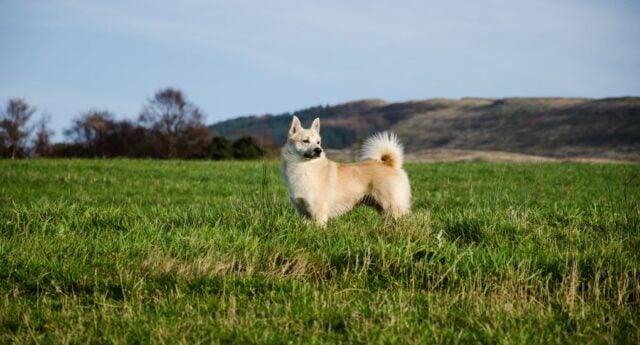
Table of Contents
The Norwegian Buhund is a medium-sized herding breed originating from Norway.
With an attractive foxy face, the Nordic spitz-type breed is believed to have been connected with the Vikings.
They are intelligent dogs with an eager-to-please attitude. These quick learners can handle various jobs and sports.
The Norwegian Buhund, also known as the Norsk Buhund or the Norwegian Sheepdog, has typical spitz features like pricked ears.
They also have a thick, double coat and a tail curled over their back.
With their thick coat, they can withstand cold weather with ease.
Norwegian Buhunds are also very affectionate and loving to their people and even kids.
If you're planning to adopt a Norwegian Buhund puppy, it's nice to know that you're taking the time to research the breed well!
This blog will discuss everything you need to learn about the Norwegian Buhund breed.
Below, we'll tackle the breed's grooming needs, physical traits, temperament, health care, and more!
Without further ado, let's start with the Norwegian Buhund's history.

Norwegian Buhund History
As their name suggests, these dogs originated in Norway.
They are believed to have a connection to the Vikings since dogs similar to the Buhund have been found in Viking graves.
The name “Bu” in “Buhund” translates as farm, homestead, or mountain hut.
The second part of the name, “hund,” means dog. Combine these two, and we have the Buhund.
These herding dogs serve well in farms by working as a watchdog, pest control, and, of course, herding. Some of these dogs are still used for this purpose today!
The first Norwegian Buhund dog show happened in Norway in 1920. Moreover, in 1939, the Norsk Buhund Club was created.
In the late 1940s, the first-ever Norwegian Buhund was transported to England following World War II. More Buhunds followed in the 1960s.
The breed was recognized by the United Kennel Club in 1996 and by the American Kennel Club in 2009.
Norwegian Buhund Physical Characteristics
Norwegian Buhunds are a spitz breed bred to be able to live in cold climates. Spitz, the German word for “pointed,” refers to their triangular, wolf-like ears.
As discussed above, the Norwegian Shepherd is a medium-sized dog. Male Buhunds stand at 17 to 18.5 inches at the shoulder and weigh around 31 to 40 pounds.
On the other hand, female Buhunds stand at 16 to 17.5 inches and weigh an average of 26 to 35 pounds.
The Buhund has a soft, dense undercoat topped by a thick, hard outer coat. Their coat colors are wheaten, black, red, and wolf-sable.
Like the typical spitz breed, their tail is set on high, short, thick, and curled over the back.
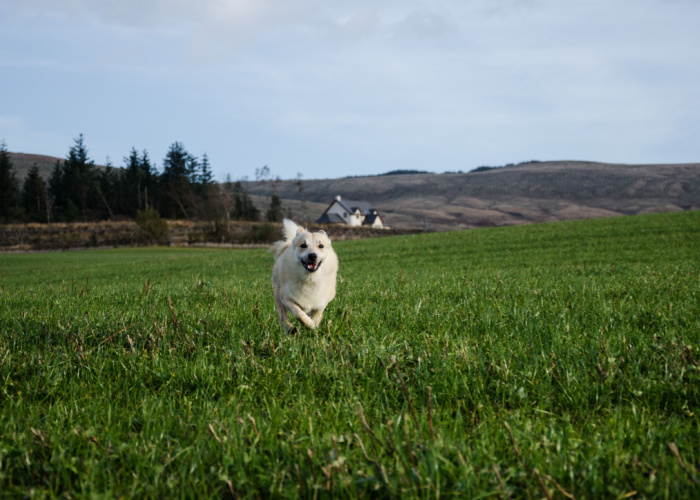
Norwegian Buhund Temperament
The Norsk Buhund is an alert and energetic dog breed that suits well with people with an active lifestyle.
Buhunds are athletic, brave, and smart dogs that can engage in different sports and activities.
These dogs can be excellent watchdogs as they bark to alert owners if they sense threats or suspicious activities around their territory.
They have an eager-to-please attitude and are less stubborn than other spitz breeds.
Buhunds have loving, gentle, and joyful personalities.
They love being around their people and thrive when given proper exercise, mental stimulation, and attention.
Living with a Norwegian Buhund
Since Buhunds are active dogs, they are best suited for homes with large, secure yards.
Even though it's not required, Buhunds will greatly appreciate a decent space for them to play in.
Moreover, Buhunds are playful and affectionate towards children. But they are better suited for homes with older children who can help with training and exercise.
But as pet owners, we must supervise all interactions between the children and the dog, no matter the breed, to prevent harm from both parties.
Teach your children how to approach and touch dogs properly. Also, teach them never to approach a dog while he's eating or sleeping.
Remember that a child should never be left unsupervised with a dog, no matter how pleasant and friendly.
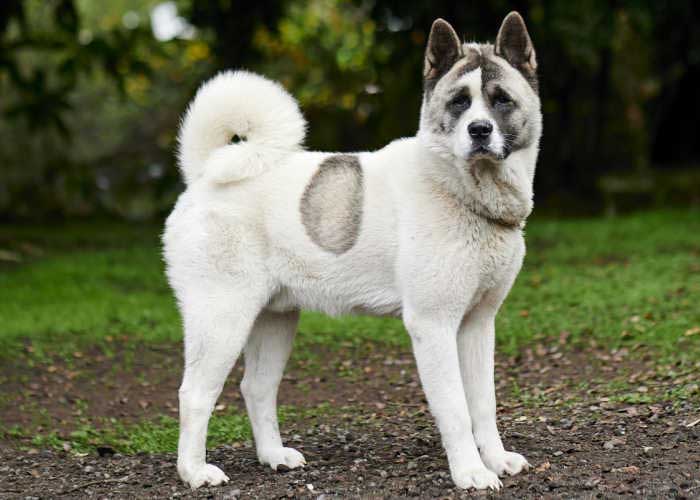
Training
Now, let's move on to the dog's training needs.
The Norwegian Buhund is considered the easiest spitz breed to train. It can be because of its eager-to-please attitude.
However, they still have independent qualities that can sometimes make training challenging.
Buhunds are intelligent dogs that will need plenty of training and mental stimulation.
Consistency is key when it comes to dog training.
Just like any other breed, it's best to use fun, positive reinforcement training methods for them to excel.
It's also best to start training and socialization at a young age.
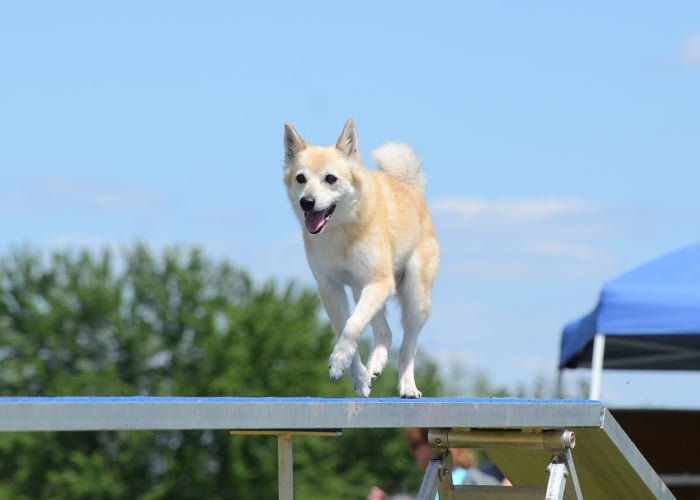
Exercise
As we've tackled earlier, Buhunds are very active and sturdy dogs.
They have the strength, stamina, and energy to work all day! That means they'll need vigorous exercise daily.
Exercise is also key to maintaining their health and reducing the chances of them developing health problems in the future.
Buhunds need at least 30 minutes to 2 hours of exercise daily.
Schedule an hour of walk, once in the morning and another at night. You can also play fetch or engage in different dog sports.
Exercising can also help strengthen your bond with Fido, as it can be your special time.
Norwegian Buhund Health Care
The Norwegian Buhund is generally a healthy breed. Their life expectancy is about 13 to 15 years!
Unfortunately, Buhunds can be prone to health problems like any other breed.
As pet owners, we must do our best to keep them healthy so that they can live a long and happy life.
Owners should schedule regular vet visits to maintain their good health.
Below, we've listed a few possible health risks the Norwegian Buhund can be susceptible to.
Hip Dysplasia
Hip dysplasia is a hereditary condition wherein the socket of the joint and ball becomes deformed.
Dogs diagnosed with hip dysplasia should keep their weight within the standard range and have them exercise with activities that encourage joint therapy.
Vets can prescribe medications for anti-inflammatory, pain relievers, and supplements for this problem.
Cataracts
An eye cataract is an obstruction of lens fiber in the lens of an eye. It is the gradual clouding of the lens in the eyes.
This condition is more common in elderly dogs but can also be acquired through genetics, eye trauma, nutritional deficiencies, or diabetes.
Best advised to consult with your vet to be more informed about what procedures are necessary.
Von Willebrand’s Disease
Von Willebrand's Disease is a bleeding disorder caused by a lack of protein in the blood.
This protein is crucial for the development of clots. Without it, open wounds can result in blood loss.
Owners should consult with their vets for tests and further exams to help properly help their dogs.
If not treated quickly, this health issue can be fatal for dogs.
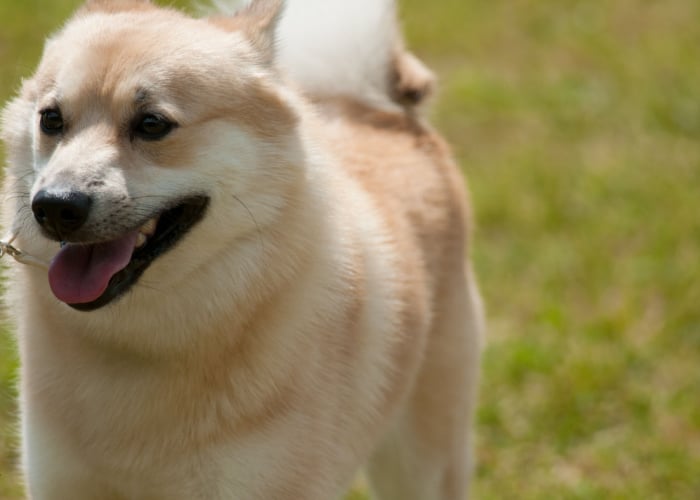
Norwegian Buhund Grooming Needs
Buhunds are double-coated dogs, and their undercoats shed heavily once or twice a year.
Brushing two to three times a week is recommended.
They do not require frequent baths unless they play in the mud, where they'll get particularly dirty or smelly.
Bathing every 4-6 six weeks or as needed is generally good.
Norsk Buhunds should have their teeth cleaned regularly. Use a brush and toothpaste or dental chews to maintain their oral health.
Buhunds’ nails should be trimmed regularly, at least once every two weeks. When trimming their nails, a good rule is never to let them touch the ground.
If you're unsure how to groom your pet, a professional groomer can help trim, bathe, and groom the coat to keep it healthy and looking its best.
Frequently Asked Questions
What does a Norwegian Buhund dog look like?
Norwegian Buhunds are medium-sized dogs resembling typical spitz features such as pricked ears, thick double coats, and tails curled over the back.
However, the Buhund is a leggy breed with a lighter frame than other Spitz dog breeds.
What is another name for a Norwegian Buhund?
Other names for the Norwegian Buhund are:
- Norsk Buhund
- Norwegian Sheepdog
- Nordiske Sitz-hunde
What is the difference between a Norwegian Buhund and a Norwegian Lundehund?
Buhunds are slightly smaller than Lundehunds. Buhunds also have a denser coat and curly tail, giving them a more traditional spitz look.
The Norwegian Buhund is also more common than the Lundehunds. Buhunds can be available by breeders from North America.
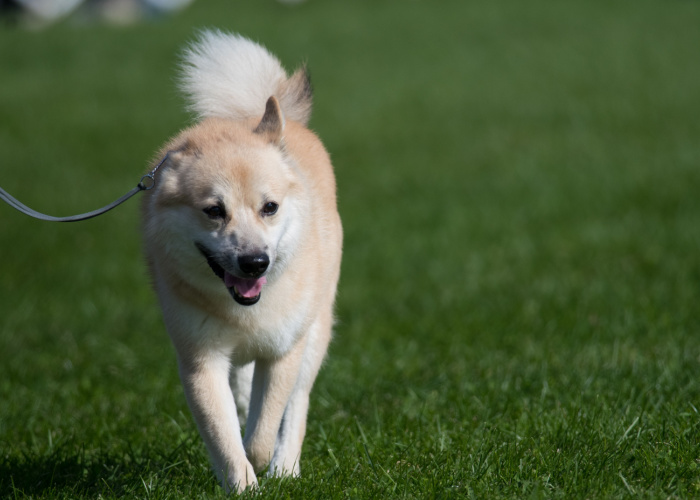
Norwegian Buhund Dog Breed Profile: Before You Go…
The Norwegian Buhund is a courageous, energetic, and loving dog from Norway.
The Norsk Buhund is a friendly and alert Spitz type that can be a great addition to your family.
Buhunds are playful and enthusiastic dogs that suit well for active people. Their energy levels are so high that they can work or play almost all day!
Buhunds are medium-sized dogs with thick, double coats. These dogs are alert and can be excellent watchdogs, as they bark at suspicious things or people.
If you're considering adopting a Norwegian Buhund puppy, remember they'll need plenty of exercise and proper training.
Buhunds will benefit from early socialization and proper training like any other dog.
Expose them to different sights, sounds, environments, people, animals, and experiences while young to help them make well-rounded dogs.












